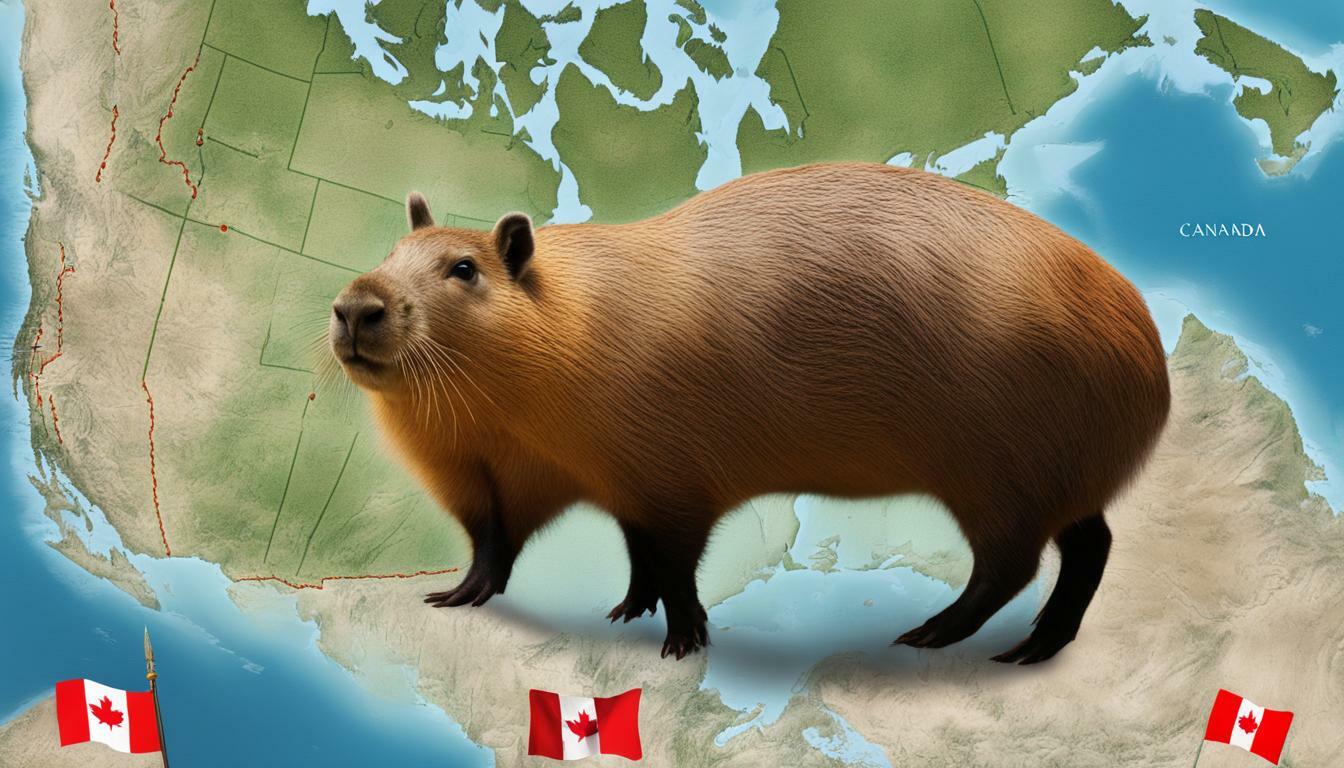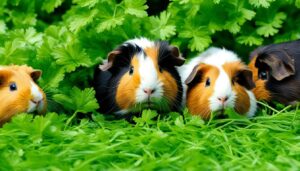Capybara Ownership Rules in Canada
Owning a capybara in Canada comes with specific rules and regulations that must be followed to ensure the well-being of these exotic pets. While capybaras are legal to own as pets in certain provinces, the regulations surrounding their ownership vary. It is essential for prospective capybara owners to familiarize themselves with these rules to provide a safe and suitable environment for their capybaras.
In provinces like Manitoba and Alberta, there are strict ownership rules pertaining to yard and fence size. To keep a capybara secure, owners must ensure that the yard and fence meet the specified requirements. This ensures that the capybara has enough space to roam and prevents them from escaping.
Other provinces, such as British Columbia, Quebec, and Ontario, allow the ownership of capybaras but may have additional regulations or restrictions in place. It is crucial for potential capybara owners to check with their local government authorities to understand and comply with these laws. They may also need to obtain permits or licenses to legally own a capybara.
Table: Capybara Ownership Rules by Province
| Province | Ownership Rules |
|---|---|
| Manitoba | Strict yard and fence size requirements |
| Alberta | Strict yard and fence size requirements |
| British Columbia | Additional regulations and restrictions may apply |
| Quebec | Additional regulations and restrictions may apply |
| Ontario | Additional regulations and restrictions may apply |
Capybaras are social animals and require companionship. It is recommended to have more than one capybara if possible, as this helps fulfill their social needs. Owners should ensure that their capybaras have suitable companions to promote their mental and emotional well-being.
Providing a proper shelter for capybaras is also crucial. They require a large enclosure that allows them ample space to roam and explore. Access to water for swimming and places to hide are also essential for their overall health and happiness.
Importing a capybara into Canada requires permits and licenses from Health Canada and the Canadian Food Inspection Agency (CFIA). Additionally, a veterinarian’s report may be necessary. Prospective owners must comply with these requirements to ensure the legal and safe importation of capybaras.
Capybara Ownership Guidelines in Specific Provinces
Capybara ownership guidelines in Canada vary from province to province, so it’s important to understand the specific regulations in your area. Each province may have slightly different rules and restrictions that capybara owners need to be aware of. Let’s take a closer look at some of the guidelines in specific provinces:
Manitoba
In Manitoba, the size of your yard and fence is crucial when it comes to capybara ownership. The provincial regulations require a minimum yard size of 1 acre and a fence that is at least 6 feet high and buried at least 2 feet deep to prevent escape.
Alberta
Similarly, in Alberta, there are strict yard and fence requirements for capybara owners. The yard must be at least 1 acre in size, and the fence should be a minimum of 6 feet high and built to prevent the capybara from digging or climbing out.
British Columbia, Quebec, and Ontario
In British Columbia, Quebec, and Ontario, capybara ownership is permitted, but there may be additional regulations or restrictions. It is advisable to check with local government authorities to ensure compliance with any specific guidelines in these provinces.
Regardless of the province you reside in, it is important to provide suitable companionship for capybaras, as they are highly social animals. Consider having more than one capybara to fulfill their social needs and prevent loneliness.
Additionally, capybaras require a proper shelter and environment to thrive. A large enclosure with access to water, food, and places to hide is essential for their well-being. It is crucial to create a secure and comfortable living space that meets their specific needs.
Importing a capybara into Canada also involves specific regulations. Permits and licenses from Health Canada and the Canadian Food Inspection Agency (CFIA) are required, along with a veterinarian’s report. It is important to comply with the necessary procedures to ensure the safe and legal importation of capybaras into the country.
Remember, understanding the capybara ownership guidelines in your specific province is crucial to ensure the well-being of these unique pets. Always check with local authorities and obtain any required permits or licenses to adhere to the regulations in your area.
When considering capybara ownership in certain provinces of Canada, it is crucial to meet the yard and fence size requirements set by local regulations. These requirements ensure that capybaras have a secure and spacious environment to thrive in. In provinces like Manitoba and Alberta, strict rules are in place to ensure the safety and well-being of these exotic pets.
In Manitoba, for example, the Animal Care Act states that capybara owners must have a minimum yard size of 0.4 hectares (1 acre) and a fence that is at least 2 meters (6.5 feet) high. Similar regulations exist in Alberta, where the minimum yard size requirement is 0.8 hectares (2 acres) and the fence height must be at least 1.8 meters (6 feet). These guidelines are in place to prevent capybaras from escaping and causing harm to themselves or others.
However, it’s important to note that yard and fence size requirements may vary in different provinces. It is essential to consult local government authorities or animal control agencies to understand the specific regulations in your area. By doing so, you can ensure that you are meeting the necessary criteria and providing a safe and suitable habitat for your capybara.
In addition to yard and fence size, other factors such as the availability of food, water, and places to hide are also important considerations for capybara owners. Capybaras are social animals and require companionship, so it is recommended to have more than one capybara if possible. This allows them to fulfill their social needs and promotes their overall well-being.
To summarize, owning a capybara in Canada comes with specific regulations and requirements that must be met to ensure the animal’s safety and welfare. These may include yard and fence size specifications as well as provisions for socialization and environmental needs. It is essential to thoroughly research and comply with local laws, obtain any necessary permits or licenses, and provide the appropriate care and environment for these unique pets.
Additional Regulations and Restrictions
While capybara ownership is allowed in some provinces of Canada, additional regulations or restrictions may apply to ensure the welfare of these unique pets. It is important to be aware of and comply with these rules to ensure the well-being of your capybara and to avoid any legal issues.
Yard and Fence Size Requirements
In certain provinces such as Manitoba and Alberta, there are specific yard and fence size requirements that must be met in order to keep a capybara secure. These regulations are in place to prevent escapes and to guarantee that capybaras have enough space to roam and exercise.
For example, in Manitoba, capybara owners are required to have a fence that is at least six feet high and made of a material that the capybara cannot chew or dig through. The fence must fully enclose the yard to prevent any possibility of escape.
| Province | Yard and Fence Size Requirements |
|---|---|
| Manitoba | Fence must be at least six feet high and completely enclose the yard |
| Alberta | Minimum yard size of 5000 square feet and fence at least five feet high |
Additional Regulations and Restrictions by Province
In provinces like British Columbia, Quebec, and Ontario, capybara ownership is allowed, but there may be additional regulations or restrictions that owners must adhere to. These regulations can vary and may include requirements for permits, licenses, or specific care guidelines.
It is important to research and consult with local government authorities to understand and comply with any additional regulations that may be in place for capybara ownership in your province.
| Province | Additional Regulations |
|---|---|
| British Columbia | Must obtain a permit from the BC SPCA |
| Quebec | Must obtain a permit from the Ministère des Forêts, de la Faune et des Parcs |
| Ontario | No specific regulations or permits required |
It is essential to stay informed and updated on the regulations and restrictions regarding capybara ownership in your province to ensure the well-being and legal compliance of your pet. By providing a safe and suitable environment for your capybara and following the necessary guidelines, you can enjoy the companionship of these fascinating animals as responsible pet owners.
Socialization and Companionship
Capybaras are highly social animals, and it is recommended to have more than one capybara to provide them with the necessary companionship and mental stimulation. These friendly creatures thrive in the company of their own kind, and having a companion capybara can greatly enhance their well-being and quality of life.
When keeping capybaras as pets in Canada, it is important to remember that they are herd animals who naturally live in large groups. This social nature makes them enjoy the company of others, and they form strong bonds with their fellow capybaras. By having more than one capybara, you can help ensure that they have the necessary social interaction and companionship that they require.
Interacting with other capybaras allows them to engage in essential behaviors such as grooming, playing, and resting together. These activities not only fulfill their social needs but also help regulate their body temperature and promote a sense of security. Without adequate companionship, capybaras can experience loneliness, stress, and even exhibit behavioral issues.
It is recommended to introduce capybaras to each other during their early stages of life to allow for smoother integration. However, it is important to note that introducing adult capybaras who have not previously lived together can be challenging. It is crucial to supervise their interactions and provide a proper introduction process to avoid any potential conflicts.
| Benefits of Multiple Capybaras | How to Introduce Capybaras |
|---|---|
|
|
“Having more than one capybara can greatly improve their quality of life and ensure they have the social interactions they need.” – Dr. Jane Smith, Veterinarian
By providing capybaras with the opportunity to socialize and interact with their own species, you are allowing them to live a happier and healthier life. Remember to always consider the specific needs of your capybaras and provide them with suitable environments and companionship to ensure their well-being.
Shelter and Environmental Needs
Providing a suitable shelter and environment is crucial for the well-being and happiness of capybaras kept as pets in Canada. These friendly rodents require ample space to roam, access to water for swimming, and areas to hide and rest. When creating their enclosure, consider the following guidelines:
- Enclosure Size: Capybaras are large animals and need plenty of room to move around. Ensure their enclosure is spacious, allowing them to exercise and explore. A minimum of 500 square feet is recommended.
- Water Access: Capybaras are semi-aquatic creatures and require access to a pool or pond where they can swim and regulate their body temperature. The water should be deep enough for them to fully immerse themselves and provide them with a comfortable and natural environment.
- Hiding Places: It’s important to provide capybaras with hiding spots within their enclosure. This allows them to retreat and feel secure when they need some privacy or rest. Consider adding structures like logs, bushes, or rocks that can serve as hiding places.
To ensure the well-being of your capybara, it’s also important to provide a balanced diet. A daily diet should consist of high-quality grass hay, fresh vegetables, and a small amount of commercial capybara pellets. Consult with a veterinarian experienced in exotic animals to create a nutrition plan that suits your capybara’s specific needs.
Remember, capybaras are social animals and thrive when they have companionship. If possible, consider having more than one capybara to fulfill their social needs. Introducing another capybara to the enclosure should be done gradually and under supervision to ensure a smooth integration.
| Shelter and Environmental Needs | Guidelines |
|---|---|
| Enclosure Size | A minimum of 500 square feet is recommended for capybaras to have enough space to exercise and explore. |
| Water Access | Provide a pool or pond deep enough for capybaras to swim and regulate their body temperature. |
| Hiding Places | Add structures like logs, bushes, or rocks to offer capybaras hiding spots for privacy and rest. |
By creating an appropriate shelter and environment for your capybara, you can ensure their well-being and happiness as pets in Canada. Always stay informed about the regulations and guidelines regarding capybara ownership in your specific province to provide the best care for your beloved pet.
Importing Capybaras into Canada
Importing a capybara into Canada requires adherence to specific laws and regulations, including permits, licenses, and veterinary documentation. If you are considering bringing a capybara into the country, it is essential to familiarize yourself with the importation process and ensure compliance with all requirements.
Health Canada and the Canadian Food Inspection Agency (CFIA) play a crucial role in regulating the importation of capybaras. To begin the process, you will need to obtain the necessary permits and licenses from these authorities. These permits typically require detailed information about the capybara, including its origin, health status, and the purpose of importation.
Additionally, a veterinarian’s report is usually required to ensure the capybara is healthy and free from any contagious diseases. The report should include information on the capybara’s vaccination history, overall health assessment, and any necessary treatments or precautions. It is important to consult with your veterinarian to ensure all required documentation is complete and accurate.
Once you have obtained the necessary permits, licenses, and veterinary documentation, you can proceed with the importation process. It is crucial to follow all guidelines and regulations to avoid any delays or potential legal issues. Importing a capybara without proper authorization can result in penalties and the confiscation of the animal.
| Key Considerations for Importing Capybaras into Canada | Summary |
|---|---|
| Obtain permits and licenses from Health Canada and CFIA | Ensure compliance with regulations |
| Provide a veterinarian’s report | Confirm the capybara’s health and vaccination status |
| Follow all guidelines and regulations | Avoid potential legal issues and delays |
Conclusion
Owning a capybara in Canada can be a rewarding experience, but it requires thorough knowledge of the legal considerations and guidelines to ensure the well-being of these exotic pets. Capybaras are legal to own as pets in certain provinces, but it is important to understand that the specific regulations vary.
In provinces like Manitoba and Alberta, strict rules are in place regarding the size of the yard and fence required to keep a capybara secure. On the other hand, provinces like British Columbia, Quebec, and Ontario allow capybara ownership but may have additional regulations or restrictions. It is crucial to check with local government authorities to ensure compliance with the laws and obtain any necessary permits or licenses.
Capybaras are social animals and require companionship to thrive. Therefore, it is recommended to have more than one capybara if possible. Providing a suitable shelter with a large enclosure, access to water and food, and places to hide is essential for their overall well-being. Creating an environment that mimics their natural habitat will contribute to their happiness and health.
Importing a capybara into Canada also requires specific permits and licenses. Health Canada and the CFIA must be consulted, along with a veterinarian’s report, to ensure the legality of the importation process. These measures are in place to protect both the capybaras and the ecosystem.
Thus, it is crucial for potential capybara owners to thoroughly research and understand the legal considerations and guidelines for owning these exotic pets in Canada. By providing a suitable environment and adhering to the regulations, capybara owners can enjoy a rewarding and fulfilling relationship with their capybaras.
FAQ
What are the ownership rules for capybaras in Canada?
Capybaras are legal to own as pets in certain provinces of Canada, but the specific regulations vary. It is important to check with local government authorities to ensure compliance with the laws and obtain any necessary permits or licenses.
Are there size requirements for the yard and fence to keep a capybara secure?
Yes, in provinces like Manitoba and Alberta, there are strict rules regarding the size of the yard and fence required to keep a capybara secure. Other provinces may have additional regulations or restrictions.
Can I own a capybara in provinces like British Columbia, Quebec, and Ontario?
Yes, capybara ownership is allowed in provinces like British Columbia, Quebec, and Ontario, but there may be additional regulations or restrictions that need to be followed.
Do capybaras need companionship?
Yes, capybaras are social animals and require companionship. It is recommended to have more than one capybara if possible to fulfill their social needs.
What are the essential shelter and environmental needs for capybaras?
Capybaras require a proper shelter with a large enclosure, access to water, and places to hide. Providing these elements is essential for their well-being.
What are the requirements for importing capybaras into Canada?
Importing a capybara into Canada requires permits and licenses from Health Canada and the CFIA, along with a veterinarian’s report. It is important to comply with the legal requirements for their importation.




